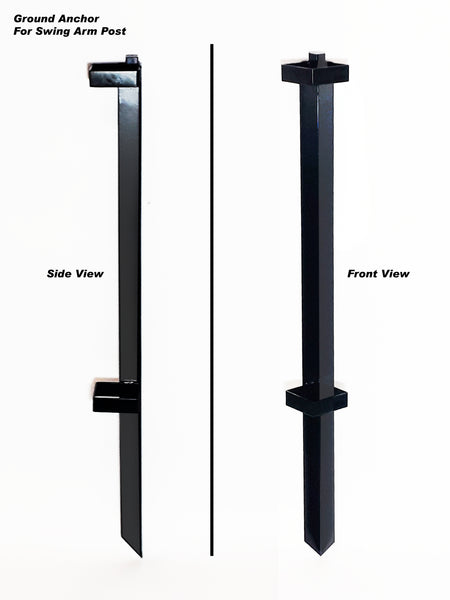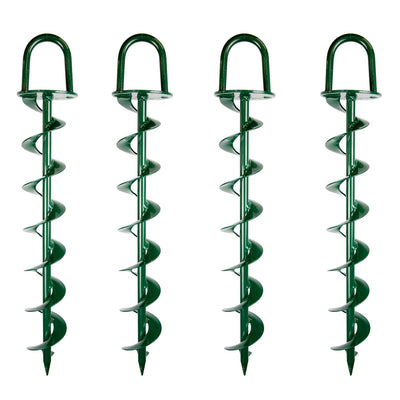Methods a Ground Anchor Can Improve Stability for Different Setups
Methods a Ground Anchor Can Improve Stability for Different Setups
Blog Article
Check Out the Different Types of Ground Support for Your Following Job
From auger supports, which excel in diverse dirt problems, to stake supports developed for short-lived installations, the choices are numerous. Furthermore, concrete and screw anchors existing one-of-a-kind advantages in details situations, while deadman supports are customized for applications needing resistance to side forces.

Auger Anchors
Auger supports are a prominent choice in different construction and landscape design jobs because of their special design and efficient securing abilities. These supports contain a helical screw-like shaft that is driven into the ground, permitting for a secure and protected hold. The spiral design assists in simple installment and makes best use of resistance versus lateral forces, making auger anchors particularly efficient in applications such as secure fencing, short-term structures, and erosion control.
The installation procedure of auger supports is relatively straightforward. They can be manually or mechanically set up, depending on the dimension and called for deepness. This versatility enables their use in diverse soil conditions, from sandy to clayey terrains. Auger supports can be easily eliminated and reused, which adds to their cost-effectiveness and sustainability.
Among the considerable advantages of auger supports is their capability to disperse tons equally throughout the bordering soil, minimizing the threat of dirt disturbance and minimizing ecological effect. Additionally, they are less vulnerable to heaving or loosening over time compared to traditional securing approaches. Subsequently, auger anchors are an outstanding option for tasks needing trusted and resilient anchoring solutions.

Stake Anchors
When it pertains to securing frameworks in a variety of outside applications, risk anchors supply a reputable and simple service. These anchors are usually built from long lasting products such as steel or aluminum, created to hold up against ecological stress and anxieties while providing ideal stability. Their straightforward design enables fast installment, making them an ideal selection for irreversible or short-lived anchoring requirements.
Stake supports are especially useful in securing outdoors tents, canopies, and various other light-weight structures versus wind and weather condition. They work by being driven right into the ground at an angle, producing a strong hold that stands up to pull-out forces - Ground Anchor. The effectiveness of risk anchors relies on a number of elements, including dirt type, dampness content, and the angle of installment
For included protection, numerous risk anchors feature accessory factors for bands or ropes, permitting tension changes as required. In applications such as landscape design or building and construction, they can properly stabilize tools or structures on uneven terrain. Generally, risk supports give a flexible and cost-effective option for protecting numerous outdoor installations, making them a favored option for professionals and DIY fanatics alike.
Concrete Anchors
Concrete supports offer a robust remedy for protecting structures to concrete surfaces, ensuring security and security in different applications. These anchors are essential for tasks varying from property constructions to large commercial installments. They are available in different types, including expansion anchors, adhesive supports, and undercut anchors, each developed for certain tons demands and environmental conditions.
Growth supports rely on mechanical devices to grip the concrete when set up. They are suitable for medium to sturdy applications. Adhesive anchors make use of high-strength epoxy or resin to bond the support to the concrete, supplying remarkable load-bearing abilities, particularly in split concrete situations. Undercut anchors develop an one-of-a-kind form within the concrete, providing extraordinary holding power, especially in applications where tensile lots prevail.
Choosing the proper concrete anchor entails taking into consideration variables such as the weight of the lots, the condition of the concrete, and environmental problems. Appropriate installment methods are important to guarantee ideal efficiency and dependability. When implemented appropriately, concrete anchors significantly boost the structural integrity of numerous tasks, making them essential in modern-day building practices. Recognizing the certain requirements have a peek at these guys of your job will certainly aid in choosing the best kind of concrete support for the task.
Screw Anchors

Screw anchors are a functional fastening service that can be successfully utilized in a range of applications where standard concrete supports might not be sufficient. These supports are composed of a helical style that enables them to be conveniently driven right into the ground, making them suitable for use in dirt and other substrates. Their unique structure provides excellent holding power and resistance to pull-out forces, making them ideal for countless jobs, from landscape design to architectural support.
Among the key benefits of screw anchors is their simplicity of setup. They require very little devices and can often be mounted without the demand for excavation, which saves both time and labor prices. Additionally, screw anchors can be gotten rid of and reused, providing a sustainable service for temporary applications.
Screw supports are specifically valuable in areas where dirt conditions are challenging, such as loosened or sandy soils. Their capacity to be installed at differing depths permits customization based upon certain task demands. Generally, screw supports provide a effective and trusted anchoring approach, making them an this contact form excellent choice for designers and service providers seeking efficient services for their tasks.
Deadman Anchors
Deadman supports work as a durable solution for maintaining structures in difficult conditions, specifically where standard anchoring techniques may fail. These anchors consist of large, hefty items hidden underground, which produce resistance against side pressures. The style generally entails a straight component, such as a block of concrete or a steel plate, hidden in the soil, to which cable televisions or bands are connected.
The performance of deadman anchors exists in their capacity to distribute loads over a bigger area, decreasing the danger of failure in unstable dirt problems. They are especially useful in applications such as maintaining wall surfaces, short-lived structures, and slope stablizing, where dirt motion can compromise the stability of the structure.
Setup of deadman supports calls for careful preparation to ensure they are positioned at the appropriate depth and orientation, optimizing their load-bearing capacity. While they may call for even more labor and material than lightweight supports, their reliability in adverse conditions makes them vital for long-term jobs. Deadman supports are functional and can be adjusted to various applications, making them a best selection for designers encountering distinct challenges in their tasks.
Final Thought
Auger anchors succeed in varied dirt conditions, while stake anchors match short-term applications. For concrete surface areas, development and glue anchors supply trustworthy options, and screw anchors supply versatility in challenging terrains.
In addition, concrete and screw supports present one-of-a-kind advantages in details situations, while deadman anchors are tailored for applications requiring resistance to lateral forces - Ground Anchor.Auger supports are a preferred choice in different building and landscape design tasks due to their unique style and reliable securing capabilities. They come in different kinds, including development supports, glue anchors, and undercut supports, each created for certain lots Full Report needs and environmental conditions
Adhesive anchors utilize high-strength epoxy or resin to bond the support to the concrete, providing superior load-bearing capacities, especially in cracked concrete circumstances. Overall, screw supports offer a efficient and reliable securing technique, making them an outstanding choice for specialists and engineers looking for effective options for their jobs.
Report this page